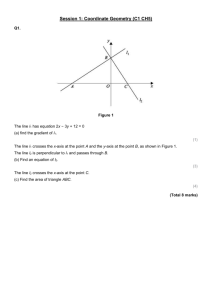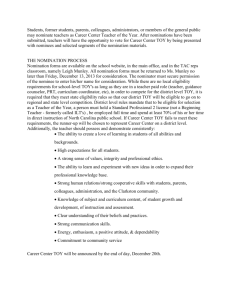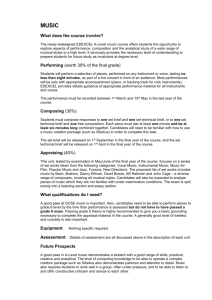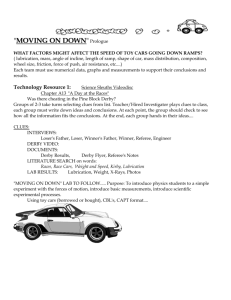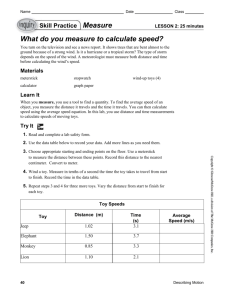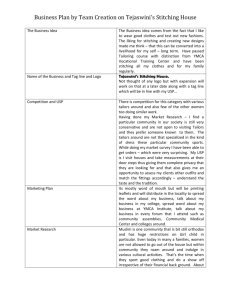Paper Reference(s)
advertisement
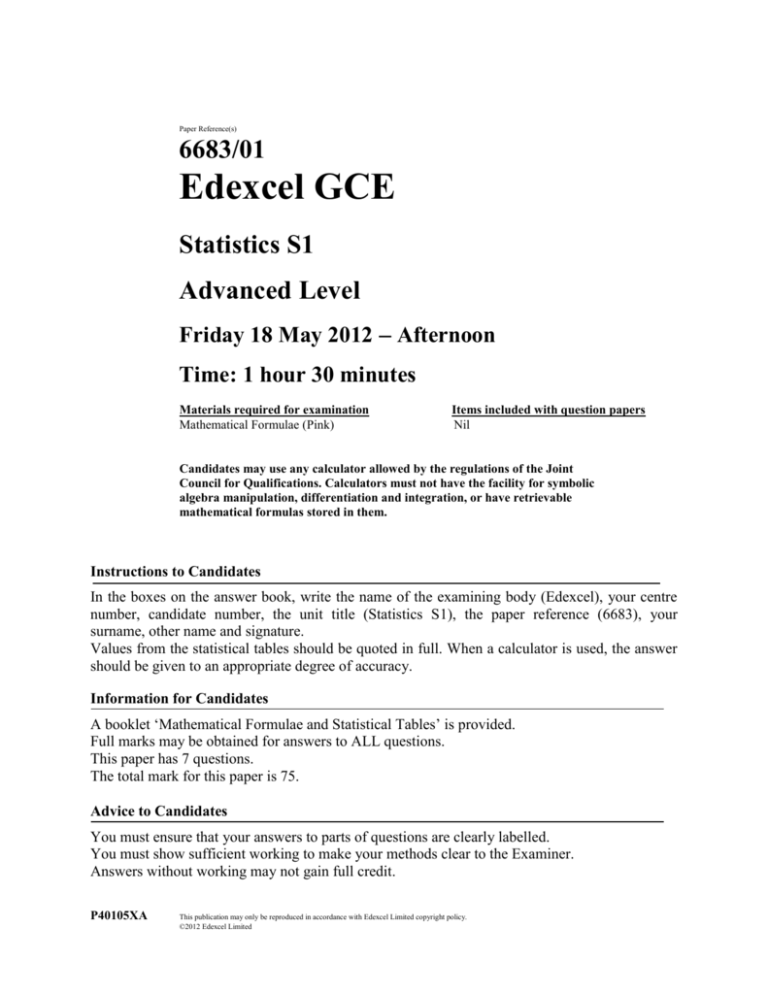
Paper Reference(s) 6683/01 Edexcel GCE Statistics S1 Advanced Level Friday 18 May 2012 Afternoon Time: 1 hour 30 minutes Materials required for examination Mathematical Formulae (Pink) Items included with question papers Nil Candidates may use any calculator allowed by the regulations of the Joint Council for Qualifications. Calculators must not have the facility for symbolic algebra manipulation, differentiation and integration, or have retrievable mathematical formulas stored in them. Instructions to Candidates In the boxes on the answer book, write the name of the examining body (Edexcel), your centre number, candidate number, the unit title (Statistics S1), the paper reference (6683), your surname, other name and signature. Values from the statistical tables should be quoted in full. When a calculator is used, the answer should be given to an appropriate degree of accuracy. Information for Candidates A booklet ‘Mathematical Formulae and Statistical Tables’ is provided. Full marks may be obtained for answers to ALL questions. This paper has 7 questions. The total mark for this paper is 75. Advice to Candidates You must ensure that your answers to parts of questions are clearly labelled. You must show sufficient working to make your methods clear to the Examiner. Answers without working may not gain full credit. P40105XA This publication may only be reproduced in accordance with Edexcel Limited copyright policy. ©2012 Edexcel Limited 1. A discrete random variable X has the probability function k (1 x) 2 P(X = x) = 0 (a) Show that k = x 1, 0, 1and 2 otherwise. 1 . 6 (3) (b) Find E(X). (2) (c) Show that E(X 2) = 4 . 3 (2) (d) Find Var(1 – 3X). (3) 2. A bank reviews its customer records at the end of each month to find out how many customers have become unemployed, u, and how many have had their house repossessed, h, during that u 100 h 20 month. The bank codes the data using variables x = and y = . 3 7 The results for the 12 months of 2009 are summarised below. x = 477 Sxx = 5606.25 y = 480 Syy = 4244 xy = 23 070 (a) Calculate the value of the product moment correlation coefficient for x and y. (3) (b) Write down the product moment correlation coefficient for u and h. (1) The bank claims that an increase in unemployment among its customers is associated with an increase in house repossessions. (c) State, with a reason, whether or not the bank’s claim is supported by these data. (2) P40105XA 2 3. A scientist is researching whether or not birds of prey exposed to pollutants lay eggs with thinner shells. He collects a random sample of egg shells from each of 6 different nests and tests for pollutant level, p, and measures the thinning of the shell, t. The results are shown in the table below. p 3 8 30 25 15 12 t 1 3 9 10 5 6 [You may use p2 = 1967 and pt = 694] (a) On graph paper, draw a scatter diagram to represent these data. (2) (b) Explain why a linear regression model may be appropriate to describe the relationship between p and t. (1) (c) Calculate the value of Spt and the value of Spp . (4) (d) Find the equation of the regression line of t on p, giving your answer in the form t = a + bp. (4) (e) Plot the point ( p, t ) and draw the regression line on your scatter diagram. (2) The scientist reviews similar studies and finds that pollutant levels above 16 are likely to result in the death of a chick soon after hatching. (f ) Estimate the minimum thinning of the shell that is likely to result in the death of a chick. (2) P40105XA 3 Turn over 4. Figure 1 Figure 1 shows how 25 people travelled to work. Their travel to work is represented by the events B bicycle T train W walk (a) Write down 2 of these events that are mutually exclusive. Give a reason for your answer. (2) (b) Determine whether or not B and T are independent events. (3) One person is chosen at random. Find the probability that this person (c) walks to work, (1) (d) travels to work by bicycle and train. (1) Given that this person travels to work by bicycle, (e) find the probability that they will also take the train. (2) P40105XA 4 5. Figure 2 A policeman records the speed of the traffic on a busy road with a 30 mph speed limit. He records the speeds of a sample of 450 cars. The histogram in Figure 2 represents the results. (a) Calculate the number of cars that were exceeding the speed limit by at least 5 mph in the sample. (4) (b) Estimate the value of the mean speed of the cars in the sample. (3) (c) Estimate, to 1 decimal place, the value of the median speed of the cars in the sample. (2) (d) Comment on the shape of the distribution. Give a reason for your answer. (2) (e) State, with a reason, whether the estimate of the mean or the median is a better representation of the average speed of the traffic on the road. (2) P40105XA 5 Turn over 6. The heights of an adult female population are normally distributed with mean 162 cm and standard deviation 7.5 cm. (a) Find the probability that a randomly chosen adult female is taller than 150 cm. (3) Sarah is a young girl. She visits her doctor and is told that she is at the 60th percentile for height. (b) Assuming that Sarah remains at the 60th percentile, estimate her height as an adult. (3) The heights of an adult male population are normally distributed with standard deviation 9.0 cm. Given that 90% of adult males are taller than the mean height of adult females, (c) find the mean height of an adult male. (4) 7. A manufacturer carried out a survey of the defects in their soft toys. It is found that the probability of a toy having poor stitching is 0.03 and that a toy with poor stitching has a probability of 0.7 of splitting open. A toy without poor stitching has a probability of 0.02 of splitting open. (a) Draw a tree diagram to represent this information. (3) (b) Find the probability that a randomly chosen soft toy has exactly one of the two defects, poor stitching or splitting open. (3) The manufacturer also finds that soft toys can become faded with probability 0.05 and that this defect is independent of poor stitching or splitting open. A soft toy is chosen at random. (c) Find the probability that the soft toy has none of these 3 defects. (2) (d) Find the probability that the soft toy has exactly one of these 3 defects. (4) TOTAL FOR PAPER: 75 MARKS END P40105XA 6
